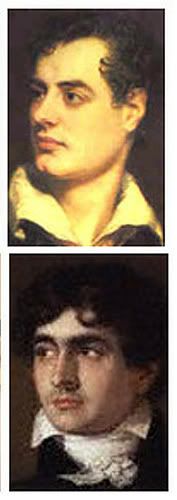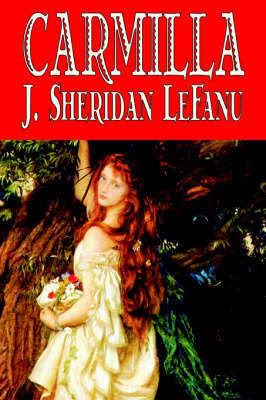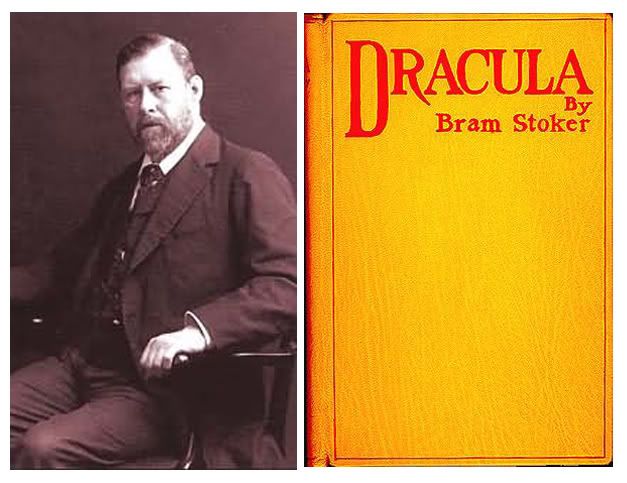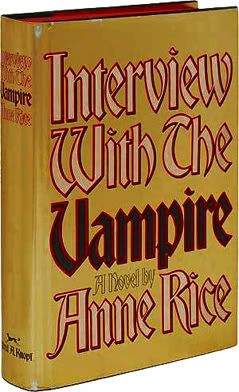Gayscape #4: Vampire Edition
I’ve always been drawn to vampires. As a young gay kid, I didn’t really understand any of the homosexual implications of The Undead, but I responded to it all one some kind of subliminal level. After all, what’s more appealing to a gay male teen than the notion of being young, hot and rich forever? Not to mention having what amounts to as very generous amounts of oral sex.
Sex is all over most of the popular vampire fiction since day one, from Dracula to Vampirella. There have been notable un-sexy vamps like those in Stephen King’s Salem’s Lot, but for most of the 19th and 20th century, the vampire and sexuality have been linked. Even today, with teen phenomenon Twilight, the sexual vampire metaphor exists in literature; although in that instance the entire subtext seems to be one encouraging abstinence. *YAWN* The way I see it, picking the most overtly sexual supernatural myth as a way of extolling the values of waiting until marriage seems lame and pointless. But then I don’t understand the appeal of High School Musical either, so what do I know?
A lot of people think that the gayifing of the vampire genre stared in 1976 with the publication of Anne Rice’s Interview with the Vampire. And while Anne Rice might have been the first popular author to make the connections between homosexuality and vampires overt and explicit, the truth is they’ve been there all along, either within the stories themselves or as part of the stories of the people who wrote them.
The first vampire story in the English language was John Polidori’s The Vampyre, published in 1819, and originally attributed to the infamous poet Lord Byron. Although vampires had been part of folklore for centuries, The Vampyre was the first story to combine the undead creature of myth with the persona of a wealthy, aristocratic and sexy gentleman, a combination that has remained ever since. Polidori’s vampire, Lord Ruthven, would dominate how vampires were perceived for the rest of the century and well into the next. And his creation and subsequent publication might very well have been the result of a bitter falling out between two male lovers.

The genesis of The Vampyre is a really fascinating one, because the modern vampire and the Frankenstein monster, two monsters linked forever in advertising and Halloween decorations, were literally born on the same night. And yes…it actually was a dark and stormy night. The poet Lord Byron was in many ways the first modern celebrity. Known just as much for his love affairs and bad boy attitude and he was for his poetry, he was in many ways the world’s first media darling. And while he was a well known lady’s man, he was also well known for his “boys on the side”, so to speak. John Polidori was not a writer, but a doctor, and Byron’s personal physician and traveling companion. One summer, while traveling through Switzerland with the poet Percy Shelly and his wife Mary, a summer storm forced them to stay overnight at one of Byron’s lakeside homes. To pass the time, they decide to make a contest on who could come up with the best horror story. They also decide to take a lot of drugs. While the contest extended to everyone, it was really between the poets Byron and Percy Shelley. After all, Mary Shelley was just the “little wife”, and Polidori was just the “doctor friend”. I doubt anyone took them seriously as artists. Byron came up with a vampire story, and Mary of course came up with Frankenstein.

Lord Byron didn’t think too highly of the vampire story he had come up with, and decided against ever doing anything with it. At some point over the next summer, Byron and Polidori had a bitter falling out. No one really knows why, but rumors persist to this day that Byron and Polidori had some kind of physical relationship, and Byron had more or less dumped Polidori, both as his doctor and as his lover. Certainly what Polidori did next suggests an angry ex lover and not just a fired employee. A few years later, Polidori took the fragment of the vampire story Byron told and finished it, but now he made the vampire figure a thinly veiled version of Byron himself, aristocratic and sexy, but also amoral and repugnant, leaving a trail of drained women in his wake. The Vampyre was published in 1819, and was an overnight sensation. It was translated into numerous stage plays all over Europe, and in fact started an entire “vampire craze” in the theater that lasted decades. The entire Theater of the Vampires scene from both the book and film versions of Interview with the Vampire was inspired by this whole fad. Everyone knew that Lord Ruthven was a version of Byron, much like everyone knows today that the character Meryl Streep played in The Devil Wears Prada is really Vogue editor Anna Wintour. So while not confirmed, it is very possible that the first modern vampire was created because one particular pissed off queen decided to get revenge and turn his ex into a monster. Well, at least on paper.
The next major vampire piece of fiction is J. Sheridan Le Fanu’s Carmilla, first published in 1872. This was the first explicitly lesbian vampire story, and somehow made it past the censors of the day. The story centers around a young woman named Laura who forges a friendship with another girl her own age named Carmilla, who of course turns out to be a centuries old vampire. Carmilla makes very obvious sexual advances towards Laura, and not only bites her, but also seems to only bite other women. Homosexuality was very taboo at the time, but it seems even them the notion of two hot girls making time was still the less scandalous option fit to see print.

Of course, the culmination of all these vampire stories was Bram Stoker’s Dracula, the most influential vampire story of all time. Dracula only ever bites and transforms women in Stoker’s story, so one might think this is where vampirism goes all hetero on us. After all, the subtext is one that clearly seems obsessed with female sexuality from a male (rapists?) perspective. Yet at the same time, there’s this constant threat that Dracula is going to bite and transform hero Jonathan Harker, leading to all kinds of pseudo sexual tension that was probably unintentional on Stoker’s part. But it’s there nevertheless.
Funny thing is, Bram Stoker himself might have very well been gay, or at the very least bisexual. Several love letters he wrote to openly gay author Walt Whitman were discovered in recent decades, and Stoker was more or less in love with his boss of some twenty years, the British actor Henry Irving. Irving more or less treated Stoker like a manservant, and according to some authors, Dracula’s relationship with human slave Renfield is not too far off of what the Irving/Stoker relationship was like. It was all very S/M before S/M was even a phrase. The biggest indicator of Stoker’s sexuality is the fact that he died of syphilis, not long after a trip to America where he had become obsessed with a young American actor. His wife never contracted the disease, leading many people to the conclusion that they had a sexless marriage. In fact, his wife Florence was thought only married Stoker because he was more financially stable than her original suitor, Oscar Wilde. Looks like she might have picked one queer over another, a 19th century version of a fag hag.

The next truly significant vampire story is Richard Matheson’s I Am Legend, first published in 1954. This story is less a vampire story and more a pre-cursor to the zombie apocalypse stories made popular later by the Romero zombie movies. The sexual component is almost totally removed from I Am Legend, and the classic vampire of yore might have gone away with it if not for the popular Hammer Dracula films of the 50’s and 60’s starring Christopher Lee and television’s Barnabas Collins, star of the cheestastic soap opera Dark Shadows.
By 1976, the vampire was only considered a product of low brow disposable entertainment. There were plenty of movies and comics and novels to be sure, but none that made any real impact or were considered literature of any kind. It was in this environment that author Anne Rice released her first novel Interview with the Vampire to the masses. While Stoker may have been oblivious as to any homosexual undertones within his novel, Rice was all too aware of all the metaphors within hers. The main character, Louis de Pointe du Lac, relates how he was transformed into a vampire in antebellum New Orleans by another seductive bloodsucker, the French aristocrat Lestat. Louis is a thinly veiled metaphor of the self loathing homosexual, who although loves his newfound sexual freedom, really also thinks God hates him and he’s going to go to Hell. Lestat on the other hand, is an equally thinly-veiled metaphor for the bitchy queen, impatient and sarcastic and funny, happily biting anyone he finds to be hot and not thinking twice about it. Together, they live for almost a century as a couple in opulent wealth, never aging and remaining hot twenty-somethings forever. They also have the ultimate in gay wish fulfillment when they get to create their own child together in the form of Claudia, a perpetual six year old dolly. (so much less hassle than adopting, and you get to go shopping for cute little girl outfits forever!) Interview, as well as Rice’s subsequent Vampire Chronicles, had plenty of other metaphors to throw around, most notably that of drug addiction as well as lost faith, but the fairly overt gay subtext made the gay community embrace it as their own.

Once Anne Rice opened the floodgates, the avalanche of gay themed vampire books, either overtly or subtextually, had begun. Whitley Streiber’s The Hunger, Poppy Z. Brite’s Lost Souls and a dozen others hit the bookstores to varying degrees of success. And it’s a train that doesn’t look to stop anytime soon. As long as people have hang ups about sexuality, and homosexuality in particular, there will likely always be vampires in print to exploit our obsessions .
Next Week: Gay Vampires Part 2: TV and Movies!
